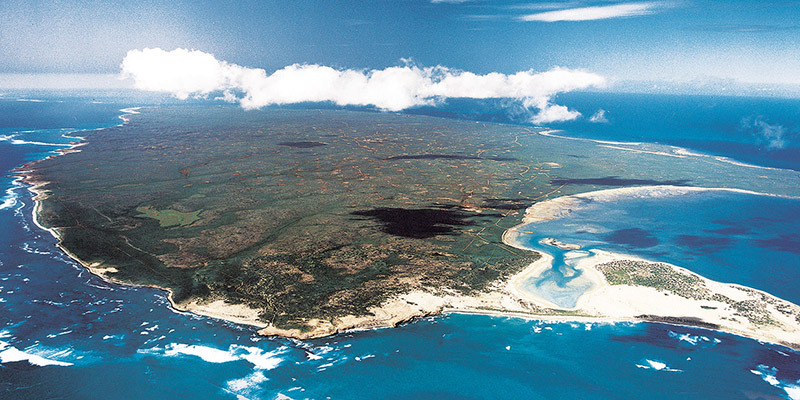Wind is perhaps the most influential of all the forces of nature, capable of changing our landscapes, our weather, and even our willingness to endure. Moreover, certain areas of the earth are so consistently windy that they have become almost mythical in lore amongst both meteorologists and adventurers. Whether it is the ferocious winds in Antarctica, or the jet stream winds found at the summit of Mount Everest, these areas have recorded some of the most extreme winds in the world.
All of the areas on this list have the right conditions to support extremely high wind speeds due to their geography, altitude, and atmospheric pressure profiles. These areas are important to study in order to understand global wind system dynamics. Below is a list of the top ten windiest locations in the world (2025), the places where the force of nature in its most powerful (and thrilling) form can be found. This list has been created based on the data and statistics provided by World Meteorological Organization (WMO)
Check Out: List of Top 10 Major Women Leaders in the World (2025)
Top 10 Windiest Places on Earth
Here are the top 10 Windiest Places on Earth along with the country and continent they belong to as well as the approximate wind speed of each:
| Rank | Name of Place | Country / Continent | Approx. Wind Speed |
| 1 | Commonwealth Bay | Antarctica | Average: 50 mph (80 km/h); Gusts: up to 150 mph (240 km/h) |
| 2 | Barrow Island | Australia | Record Gust: 253 mph (408 km/h) during Cyclone Olivia (1996) |
| 3 | Mount Washington | United States (New Hampshire) | Average: 35 mph (56 km/h); Gusts: 231 mph (372 km/h) |
| 4 | Wellington | New Zealand | Average: 16 mph (26 km/h); Gusts: 100+ mph (160 km/h) |
| 5 | Mount Everest (Summit) | Nepal / Tibet | Average: 30-40 mph (48-64 km/h); Gusts: up to 175 mph (280 km/h) |
| 6 | Cape Blanco (Oregon) | United States | Average: 25 mph (40 km/h); Gusts: up to 127 mph (204 km/h) |
| 7 | Rio Gallegos | Argentina | Average: 20-25 mph (32-40 km/h); Gusts: 60 mph (96 km/h) |
| 8 | Baku | Azerbaijan | Average: 15-20 mph (24-32 km/h); Gusts: 60 mph (96 km/h) |
| 9 | Gruissan | France | Average: 20 mph (32 km/h); frequent Tramontane winds |
| 10 | Dodge City (Kansas) | United States | Average: 13-15 mph (21-24 km/h); Gusts: 60+ mph (97 km/h) |
1. Commonwealth Bay, Antarctica
Commonwealth Bay is known as the windiest place on Earth. Located on the Antarctic coast, it boasts constant katabatic winds, dense, icy air flowing rapidly downhill from the steep slopes of the coast.
Average wind speeds in Commonwealth Bay are over 50 mph (80 km/h) and gusts can be over 150 mph. The extreme cold, high-pressure gradients along the Antarctic coast, and open terrain provide perfect wind conditions, which is why blizzards and white outs occur year-round.
2. Barrow Island, Australia

Barrow Island holds the world record for the strongest wind ever at Earth's surface, which was a wind speed of 253 mph (408 km/h) recorded during Cyclone Olivia in 1996. This very remote island off Western Australia is situated in the Indian Ocean cyclone belt and is subject to extremely violent tropical storms. Barrow Island's flat terrain and warm sea surface temperatures facilitate these strong destructive gusts, making the region one of the most extreme regions on Earth.
3. Mount Washington, U.S.
Mount Washington, located in New Hampshire, is known for its excellent winds and unpredictable weather. At the summit, a wind gust of 231 mph (372 km/h) was recorded once, which was the highest wind gust ever documented on Earth. Mount Washington has an elevation of 1,917 m (6,288 ft) and is situated at the confluence of three major storm tracks, producing hurricane-force winds frequently even in the summer. Meteorologists even refer to Mount Washington as a natural laboratory, a unique location to study extreme wind, ice, and mountain climate.
4. Wellington, New Zealand
Wellington, the "Windy City," is located between the North Island and the South Island at the center of the wind corridor in the Cook Strait. Its proximity to the sea and its funnel-shaped topography accelerates the prevailing westerlies in the region known as the "Roaring Forties." The average wind speed in the region is about 16 mph (26 km/h), with very frequent gale force winds of over 100 mph; however, despite the wind, its capital has come to accept the wind as a large part of its character and skyline.
5. Mount Everest (Summit)

The peak of Mount Everest, at a height of 8,848 m (29,029 ft), experiences winds that are stronger than most hurricanes. In winter, the jet-stream currents whips the summit at speeds of 100-175 mph (160-280 km/h), creating the snow plumes that can be seen from miles away. Climbers face even higher risks when they contend with the thin air and rapidly changing air pressure. In fact, Everest is likely one of the most extreme and windy places on the Earth.
Comments
All Comments (0)
Join the conversation